Registered with the Registrar of Newspapers for India under R.N.I 53640/91
Vol. XXVI No. 24, April 1-15, 2017
… But it’s a sorry state, seen below, we keep this landmark in
(By a Special Correspondent)
Whether you like it or not, Valluvar Kottam, a monument dedicated to the ancient Tamil poet, saint and philosopher is a landmark in Madras, a reflection of the stone sculptors’ skills. Sadly, more often than that, their striking edifice looks shabby as a result of total lack of maintenance.
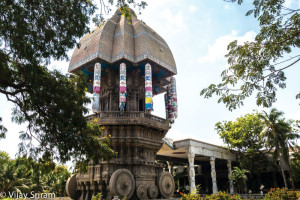 Valluvar Kottam as seen by Dr. Vijay Sriram’s camera.
Valluvar Kottam as seen by Dr. Vijay Sriram’s camera.
Valluvar Kottam, sited in approximately six acres of land in a prime location, was completed in 1976 during the first Karunanidhi administration, in memory of Thiruvalluvar who wrote the Thirukkural some 2,000 years ago. The complex hosts a majestic, sculpturally enriched 133 feet tall chariot and a much squatter rectangular building right in front of it, the latter blocking a third of the former’s height, spoiling a spectacular full frontal view. You have to see the chariot in halves, the bottom half from ground level and the shrine that’s the top half from the terrace.
A larger-than-life-size statue of Thiruvalluvar is enshrined in the chariot. As it is positioned at a height, to have a darshan, you need to climb three flights of steps to reach the bland open terrace of the rectangular building that houses the hall.
At the Kottam, the Thirukkural’s 133 chapters and 1,330 verses are immortalised by being inscribed in the 133 pillars in the second-level corridor surrounding and overlooking the first level hall that’s capable of seating about 4,000 people at a time.
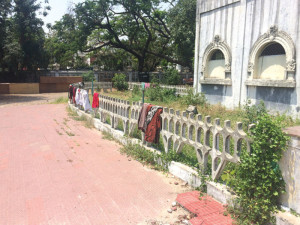
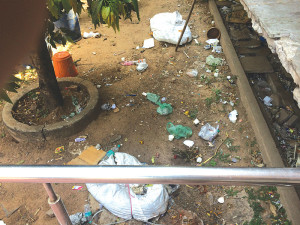
The pillars with the inscriptions are on the left side of the corridor; the right side is furnished with crudely designed glass display cases, which are all now empty and in shambles. The provision must have been meant for displaying portraits and paintings. The focus lights for highlighting the inscriptions are not in working condition and the wires hanging everywhere indicate that they have been so for quite some time. Shattered glass, broken frames and peeling linings add to the gloom.
The magnificent chariot does not need major upkeep as it is always viewed from outside, free of spectator interference, and has, therefore, survived the shoddy maintenance. But the decorative tubular cloth hangers could do with replacement or hosing down daily if made of longer lasting material like plastic.
The rest of the complex is in sad shape with signs of neglect everywhere. The masonry structures, electrical installations and other furnishings seem to be badly in need of extensive repair or replacement. Broken statues, peeling plaster, broken glass panes, wire dangling all over, missing light points and missing bulbs are indicative of inadequate everyday maintenance and the need for a major renovation programme.
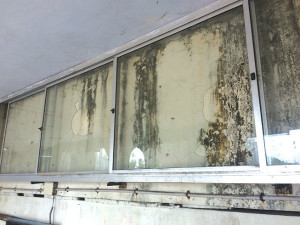
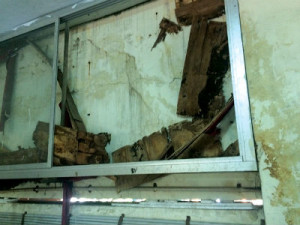
Little groups can be seen using the site as a convenient spot for gossiping, romancing or picnicking. Plastic bags, empty beverage bottles, broken furniture, broomsticks and clothes hung out to dry, cardboard plates and banana leaves thrown away after use by such events and others combine to form a depressing scene around the structure. Is there no staff for cleaning out the precinct?
The entrance fee is only Rs. 3. The average footfall is about 400-500 a day with a surge during festival holidays. The revenue from entrance and hall rental, by themselves, would be inadequate to meet normal upkeep. Rental is mainly from holding saree, clothes and handicrafts exhibitions in the hall, activities totally incongruous with the original objectives of the monument. It seems sad that the Kottam has had to resort to unrelated use of the hall to eke out any kind of revenue.
Apart from the shrine and the inscriptions there is nothing in terms of activities or information availability that charges the atmosphere at the complex with memories of the saint and his renowned work – no library, bookshop for related literature, symposiums, or cultural festivals.
The complex is managed by an official of the Department of Information and Public Relations. The civil maintenance and repairs are said to be the responsibility of the PWD. It is sad that a monument of high potential tourist value has been relegated to the status of any public drain or road by being put under the care of the PWD. It is a responsibility that should have been entrusted to the Department of Cultural Affairs or Tourism.
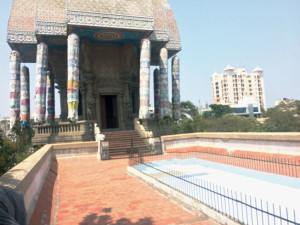
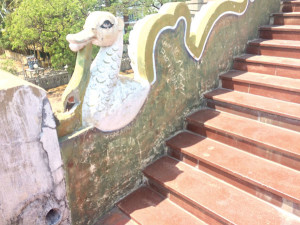
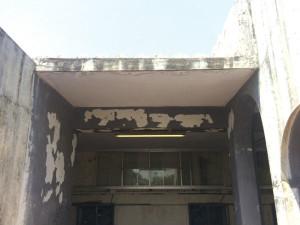
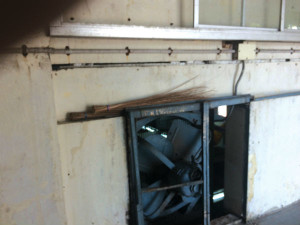
The state of Valluvar Kottam gives rise to several questions. Is the neglect due to want of funds? Is it losing out on the priority accorded for use of revenue for issue of freebies? Could it be due to one government assigning low importance to the upkeep of a project because it was conceived by another government? Why don’t those owing allegiance to the government that built it with so much fanfare volunteer to keep it spick and span? Why can’t governments rise above parochial politics?
Answers would provide explanations but would be no justification for the neglect. Valluvar Kottam challenges our sense of commitment to preserve symbols of our ancient heritage and culture.

